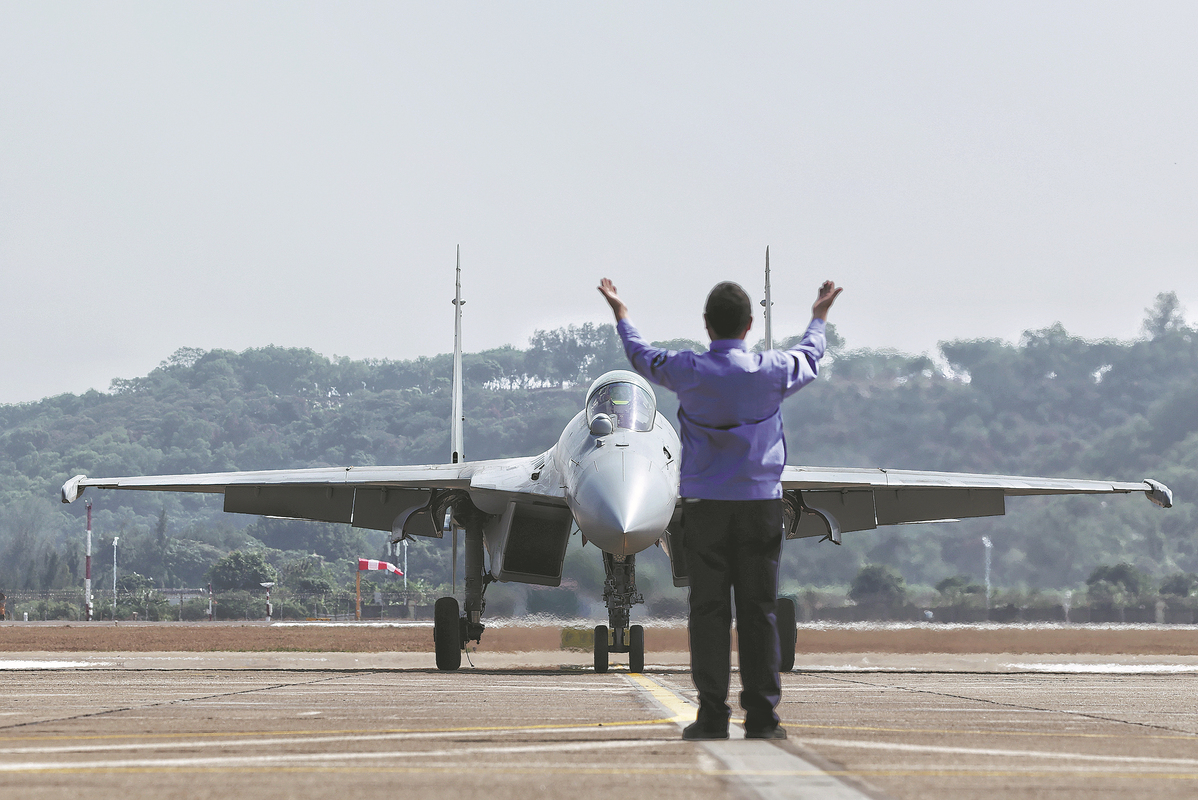Navy fighter makes public debut
China Daily, November 07, 2024 Adjust font size:

A new variant of the J-15 carrier-borne fighter jet arrived at an airport in Zhuhai, Guangdong province, on Wednesday morning, making its formal public debut.
The light gray-painted, catapult-capable J-15T landed at the Zhuhai Jinwan Airport and was soon surrounded by maintenance workers who appeared to be from the Aviation Industry Corp of China, a State-owned defense contractor and the nation's leading aircraft maker.
The J-15T is scheduled to take part in the upcoming 15th China International Aviation and Aerospace Exhibition, set for Nov 12-17 in Zhuhai, according to the People's Liberation Army Navy. It will be the first time the Navy will showcase its aircraft in the biennial exhibition, which is China's biggest arms expo and is commonly known as the Zhuhai Airshow.
Wednesday's debut also formally signaled the declassification of the J-15T variant. Though the Navy had published pictures of a group of what appeared to be the new planes taking part in a recent dual-carrier exercise in the South China Sea, it had not disclosed any information about the previously classified jet model.
The design of the J-15T is based on the baseline type of the J-15 and was modified to allow it to be launched by an aircraft carrier's catapult system, which means it is able to carry more fuel and munitions and fly farther.
Compared with the original J-15, the catapult-capable model is characterized by its strengthened nose landing gear, the removal of the airspeed tube from its nose and the use of new materials, avionics and indigenous turbofan engines.
Upon its large-scale deployment, a carrier strike group will have more firepower and stronger operational capability, according to Wang Yanan, chief editor of Aerospace Knowledge magazine.
He said the J-15T can be deployed both on the Navy's two current aircraft carriers — the CNS Liaoning and the CNS Shandong, both of which have a standard displacement of around 50,000 metric tons and use a ski jump method for launching fixed-wing aircraft — and its future third carrier, the much larger CNS Fujian that will use the cutting-edge electromagnetic catapult to launch fixed-wing aircraft. The Fujian is in the middle of its sea trial phase and is expected to be commissioned in the near future.
"The J-15T will gradually replace the old J-15s and become the backbone of naval aviation units. The combination of J-15T and the carrier-based variant of the J-35 stealth fighter jet will tremendously enhance the Chinese carrier force's operational reach and give commanders more options when choosing assets for different scenarios," Wang said.
In addition to the J-15T, there is also a new variant called the J-15D, which is tasked with performing electronic warfare operations, similar in broad form and function to the United States Navy's EA-18G Growler, he said.
The twin-engine J-15 family was developed by the Shenyang Aircraft Design and Research Institute, an AVIC subsidiary in Liaoning province.
Spearheading the nation's carrier force, the J-15 series is able to carry anti-ship, air-to-air and air-to-ground missiles and precision-guided bombs.
Military experts said that it has comprehensive capabilities comparable to those of Russia's Su-33 and the US' F/A-18 Hornet.